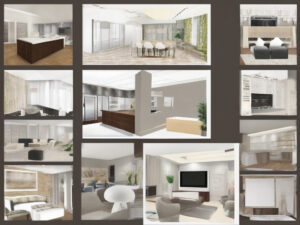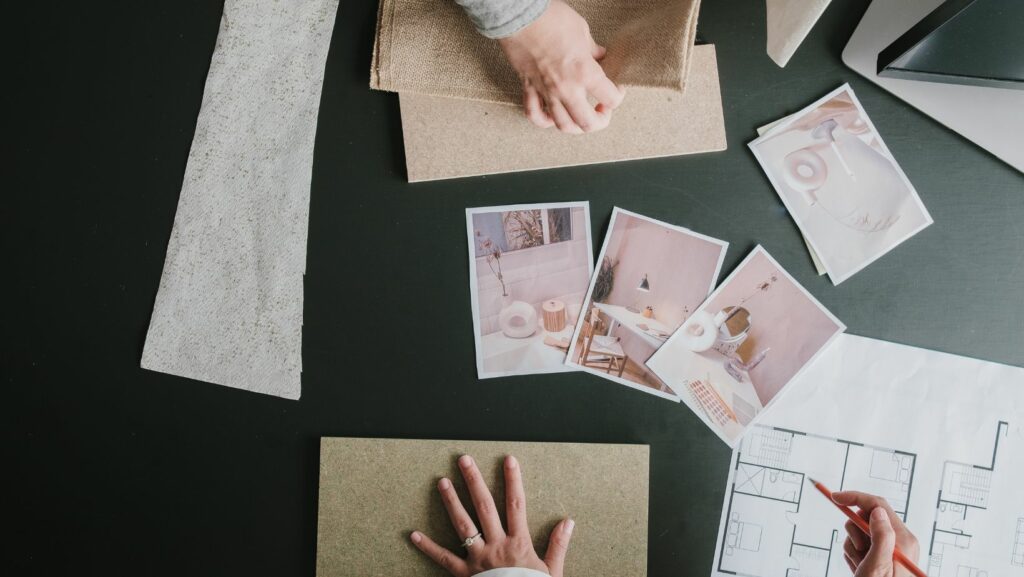Interior Design Presentation Board
Interior design presentation boards serve a crucial purpose in the design process by acting as visual communication tools. Designers utilize these boards to present a cohesive and comprehensive overview of their design concepts to clients, collaborators, and other stakeholders. By consolidating various elements such as color schemes, material samples, furniture layouts, and inspirational images onto a single board, designers can convey the essence of their vision effectively. Presentation boards help in garnering feedback, facilitating discussions, and ensuring that all parties involved have a clear understanding of the proposed design direction.
Types of Presentation Boards

There are different types of interior design presentation boards that cater to varying needs and preferences within the industry. Mood boards, also known as concept boards, focus on evoking a particular emotion or style through a collection of images, textures, and colors. Material boards, on the other hand, emphasize the tactile aspects of a design by showcasing samples of fabrics, finishes, and other materials intended for use in the space.
Additionally, sample boards concentrate on presenting physical samples of materials such as flooring, wall coverings, and upholstery to give stakeholders a hands-on experience of the proposed materials. Lastly, digital presentation boards leverage technology to create virtual representations of design concepts, incorporating images, renderings, and interactive elements to enhance the presentation experience and provide a more dynamic visualization of the final design outcome.
Color Schemes and Fabric Swatches
In crafting an interior design presentation board, the selection of color schemes and fabric swatches is paramount. These components serve as the foundation for conveying the design aesthetics and mood to the viewers. By incorporating a cohesive color palette that resonates with the project’s theme, designers can evoke the desired emotions and ambiance. Fabric swatches add texture and depth, allowing clients to not only see but also feel the proposed materials, enhancing the tactile experience of the design.
Furniture and Material Selections
The inclusion of furniture and material selections on a presentation board is crucial for illustrating the practical aspects of the design concept. By showcasing furniture pieces and materials, designers can demonstrate how the space will look and function upon completion. This visual representation helps clients visualize the layout and understand the quality of materials proposed for the project. By carefully curating furniture and material choices, designers can communicate the overall style and functionality of the design scheme effectively.
Layouts and Spatial Planning

Effective interior design presentation boards incorporate layouts and spatial planning to provide a comprehensive overview of the project’s design flow and functionality. By presenting floor plans, furniture arrangements, and spatial organization, designers can demonstrate how the space will be utilized and navigated. Clear and well-thought-out layouts help stakeholders grasp the spatial dynamics of the design, showcasing the traffic flow, focal points, and functional zones within the space. This detailed representation aids in ensuring that the design aligns with the client’s requirements and enhances the overall user experience of the space.
Software Tools for Interior Designers
In the digital age, interior designers have a plethora of software tools at their disposal to create stunning presentation boards. These tools range from industry standards like AutoCAD and SketchUp to user-friendly platforms such as Canva and Adobe Creative Suite. Designers leverage these software tools to craft visually appealing boards that showcase their concepts with precision and creativity. By harnessing the power of digital software, designers can streamline their workflow, experiment with various design elements, and produce high-quality presentations that resonate with clients.
Presenting to Clients Virtually
With the rise of virtual communication, interior designers are adapting their presentation techniques to meet the demands of remote clients. Virtual presentations offer a convenient way to showcase design boards without the need for in-person meetings. Designers utilize video conferencing platforms like Zoom and Microsoft Teams to walk clients through their digital boards, discussing color schemes, furniture selections, and overall design concepts in real-time. By embracing virtual presentations, designers can engage clients effectively, receive instant feedback, and ensure that their design visions are accurately conveyed, regardless of geographical limitations.
Interior design presentation boards play a crucial role in communicating design concepts effectively. By focusing on cohesion, theme, and avoiding common mistakes, designers can create visually compelling boards. With the advent of digital tools like AutoCAD and Canva, creating these boards has become more efficient. Virtual presentation platforms such as Zoom and Microsoft Teams have revolutionized how designers engage with clients remotely. Embracing these technological advancements ensures that design visions are accurately conveyed to clients, regardless of their location.
